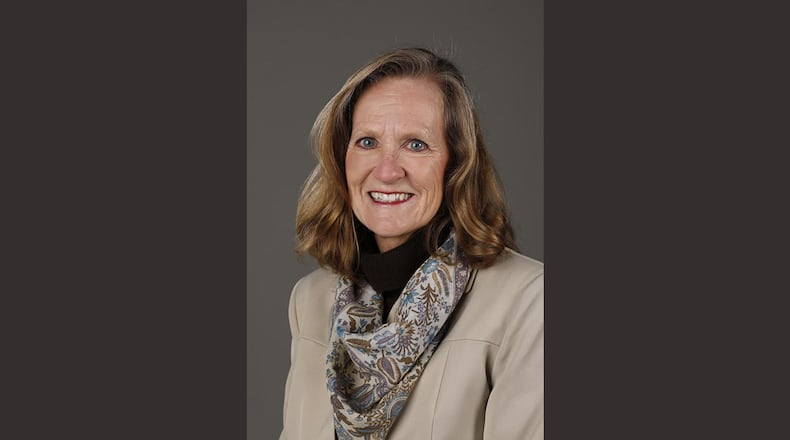» UNMATCHED COVERAGE: From uniform to job: Ohio wants to bridge gap for veterans
“My goal is to continue our strides in making Ohio a veteran-friendly state — a place that is sought out by veterans, whether Ohio was their original home or not,” she said.
Here are five things the Dayton Daily News learned during an interview with the new director:
1. She has an extensive military background. Ashenhurst brings experience from her 37 years of service in the Ohio National Guard — having held assignments at all levels including company, battalion, brigade and Joint Force Headquarters.
“It’s all about passion,” she said.
She is the first woman to take over the role as director since the office’s inception in 2008.
She served as adjutant general of Ohio, commanding the 17,000 personnel of the Ohio Army and Air National Guard, Ohio Military Reserve and Ohio Naval Militia. Ashenhurst started her military career in 1978 when she enlisted in the Ohio National Guard. She was commissioned as an engineer officer in 1980 through the Ohio Army National Guard’s Officer Candidate School.
2. Job readiness is a priority for her. Ashenhurst wants to take a proactive approach to veteran employment — making sure the department has communicated with deployed service members from Ohio while they're currently still serving.
“We’re going to continue our great strides connecting our returning veterans with jobs and workforce placement and development,” she said. “I really think it’s a critical time when our military members are transitioning to civilian life. If we can catch them and have them coming home to a job — instead of trying to come home and look for a job — I think we get ahead of homelessness; we get ahead of other [issues] like drug abuse, mental health issues, suicide even.”
Know a local veteran? We want to hear their story https://t.co/Ri2sYEtRzD @WHIORadio @DaytonDailyNews @WHIOTV
— Kara Driscoll (@KaraDDriscoll) January 29, 2019
Ashenhurst said part of the problem for veterans is translating military experience into a civilian resume. The state’s website, OhioMeansVeteransJobs.com, provides active and retired military service members with access to resources, training, employment opportunities and benefits. The site also has a “military skills translator,” which helps individuals translate military skills into a polished resume fit for their new career pursuit.
3. The Ohio Department of Veteran Services works as a function for veterans of all ages. The department had a Senate-approved budget of $90.7 million in fiscal 2018 – much of that going to the operations efforts of two veteran nursing care facilities in the state. The state agency has just over 1,000 employees, including 935 that are held by permanent full-time and part-time workers.
» UNMATCHED COVERAGE: DeWine takes steps to position Ohio as military powerhouse
The department has stewardship of two Ohio Veterans Homes:
• The Home in Georgetown currently houses 168 residents and the Home in Sandusky currently houses 633 residents – all of them former wartime service members who have established residency in Ohio.
4. Ashenhurst said mental health assistance should be available for all veterans. She reflected on how the military has changed, when military service members were advised to hide emotional or family issues from their superior officers. Now, the military leadership encourages everyone to talk about issues they might be having."It's a whole new day," she said.
She said as more active military and veterans who talk about mental health, it might encourage older veterans — from the Vietnam War era — to seek help too. The department does not have any oversight of the VA facilities in the region.
Veterans and their family members can call the Veteran Crisis Line 1-800-273-8255 and Press 1, chat online or send a text message to 838255 to receive confidential support 24 hours a day, 7 days a week, 365 days a year. Support for deaf and hard of hearing individuals is available.
Ohio Cares — collaboration of state and local agencies — also supports the behavioral health of returning Operation Iraqi Freedom/Operation Enduring Freedom veterans and their families.
In Ohio, 210 veterans killed themselves in 2015, the latest VA state data available. “We have to reach family and friends, so they can be cognisant of behavior changes. Is there a change in drinking patterns? Are they showing up to work, church?” she said.
Want to share a military news tip? Tell us here https://t.co/Sq8NY7Jsne @WHIORadio @daytondailynews
— Kara Driscoll (@KaraDDriscoll) January 31, 2019
» WHAT YOU NEED TO KNOW: Dayton VA director says hospital to focus on new jobs, programs in 2019
5. The department will lead a push to make veteran benefits less complicated to navigate. Ashenhurst said the department is discussing ways — like a PSA campaign — to make veteran benefits easier to understand for them and their family members. The department has County Veterans Offices in all 88 counties to help veterans navigate the benefits system including:
• Federal benefits: disability compensation, pension, health care, home loans, burial and survival benefits
• State benefits: Veterans bonus, education, employment, health care, home loans, Ohio Veterans Homes and the Military Injury Relief Fund
• Local benefits: Claim preparation and assistance, financial assistance, transportation to VA medical appointment and indigent burials
FIVE MILITARY READS
• 5 key facts we learned from Wright-Patt active shooter report
• Air Force creates new pitch day to give away $40M to startups
• Shutdown affects local workers: 'It got real for us'
• For Dayton-area veterans, food insecurity still poses issue
About the Author
